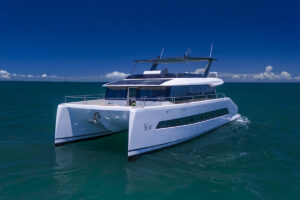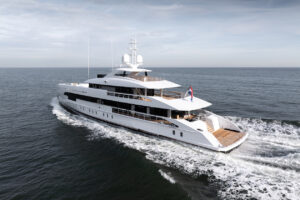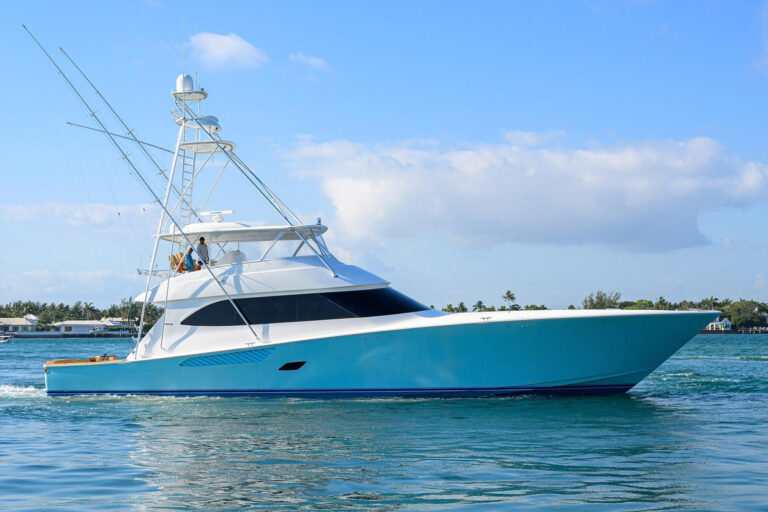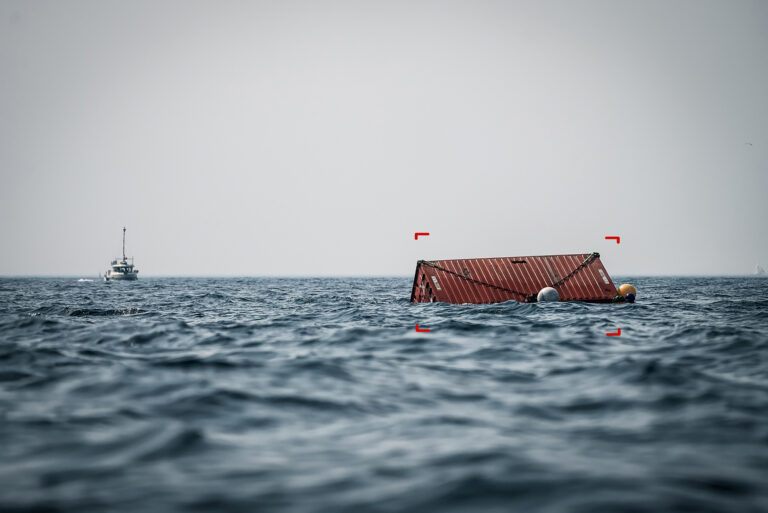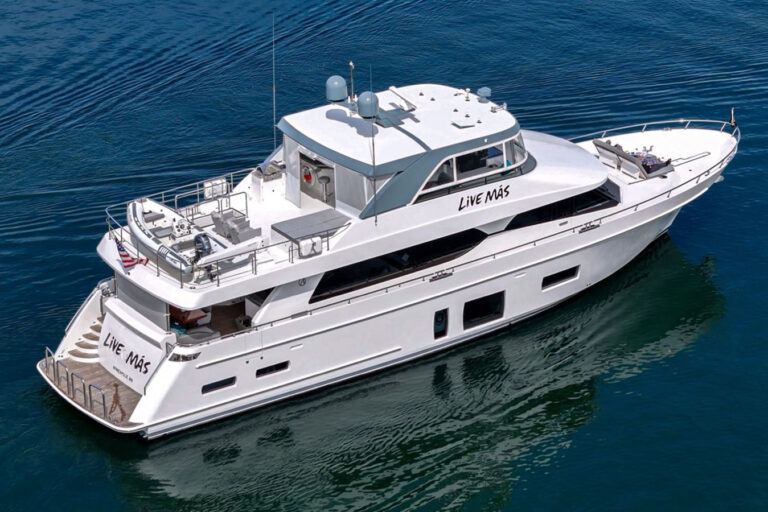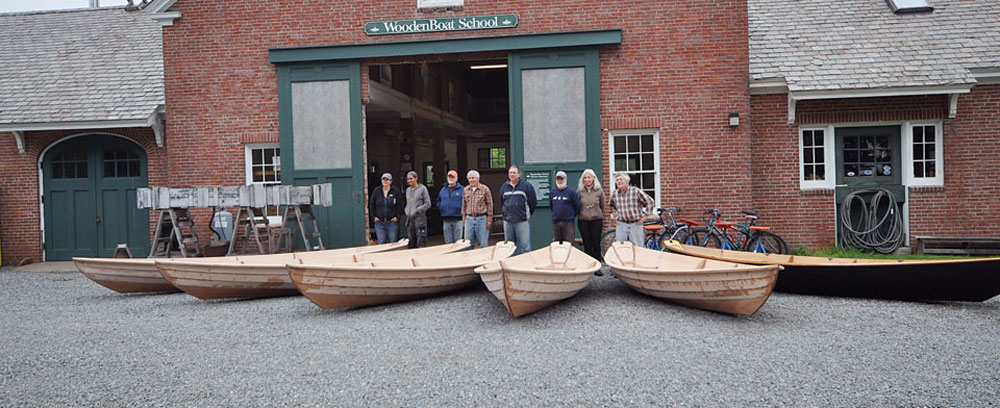
WoodenBoat School Maine
There’s a place I go, in my mind’s eye, when the day has been filled with a lot of those little frustrations that vex the spirit: It’s an old farmstead on the coast of Maine, with a green lawn that slopes gently to the sea, barns that hum with the quiet, contented energy of people doing something they love, and a scenic waterfront where one lovely wooden boat after another awaits your command … This is WoodenBoat School. And it’s a little piece of heaven for anyone who loves the water and traditional boats.
The scenery of Blue Hill peninsula is your first indication that you’re headed somewhere magical. It’s beautiful, of course — it is Maine, after all. But as you drive east on Route 175, along Blue Hill Bay, you get farther and farther away from big-box stores, traffic, modern stuff. There is nothing but beautiful blue-black water to one side, peppered with lobster boats and lined by rocks, evergreens and old houses with attached barns.
Brooklin, Maine, which is home to WBS, is a small town with a general store, a library and a year-round population of about 700 people. But WoodenBoat’s presence has an enormous impact on the area, bringing 700 to 800 students to the town each year for the approximately 100 courses it offers, which range from sailing to marine electrics, scrimshaw to figurehead carving, wooden boat surveying to blacksmithing.
Jon Wilson founded WoodenBoat magazine in 1974 and has been phenomenally successful, growing his readership from 9,000 subscribers after his first year in print to 100,000 readers within 10 years, adding two new titles (Professional Boatbuilder and Small Boats magazines) and starting the WoodenBoat School in 1981. What you feel when you’re at WBS is that a place that’s as wonderful, as communal and as dedicated to something as supposedly impractical, beautiful and arcane as wooden boats has got to be the result of real vision. It doesn’t just happen. Though Wilson is less involved in the school and magazines than he used to be, he has tapped into a deep vein of passion for wooden boats that is self-perpetuating, if not self-sustaining (as the hard-working staff surely knows). What Wilson has created at WoodenBoat School, with the help of Rich Hilsinger, who runs it with gusto and grace, is like a wooden boat Disneyland, minus the plastic perfection and the cartoon characters come to life … Here, adulation is reserved for any handmade craft of gorgeous lines that’s been built with enough love and care to last a lifetime. It’s like Brigadoon with brightwork! Maybe that’s why 60 percent of the student body each week is alumni.
Early this summer, I made my second trip to the WoodenBoat campus, but my first as a bona fide student. My partner, Karyn, made the trip with me: We were going to build a Northeaster Dory! John C. Harris, the owner of Chesapeake Light Craft (CLC), would be teaching our class, and we’d be constructing this 17½-foot beauty in 5½ days (read more about the boat here and see the complete photo gallery). Looking at Harris’ finished dory on sawhorses outside the barn, and knowing my general skill level, that seemed highly unlikely. I had imagined myself capable of creating a shorter, squatter, uglier boat, maybe something with a flat bottom, but not this long, lean, elegant lapstrake craft … How the hell was I going to build this?
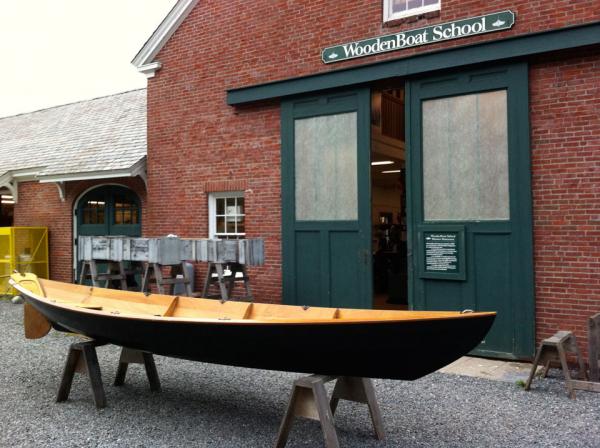
The design is Harris’ own and is constructed with CLC’s patented LapStitch process and a pre-cut kit. On Monday, after a Sunday evening welcome and introduction, we got to work: We sanded the hull panels, made of 6 mm okoume, and assembled the frames, the thwarts, the rails and the transom. Harris introduced us to MAS odorless epoxy, which would become our best friend in the days ahead as we mixed cup after cup of the stuff, sometimes with additives, to various consistencies for multiple purposes.
On Tuesday, which was luckily the last cold, damp day of our week, we sanded the frames and began wiring the hulls together, installed the breast hooks and then glued the plank seams. By the end of the day, we had each created something that looked roughly like a boat, and it was pretty thrilling.
Wednesday brought warm sunshine and the barn doors were wide open as we clipped and pulled the wires, sanded the interior and began filleting — applying smooth stripes of epoxy mixed with wood cellulose to lend a little structural stiffening and round out the interior corners. This was probably the most challenging part of the build for many of us — oh, OK, for me. Harris’ dory on sawhorses mocked me with its perfectly smooth and glossy fillets — ours at first had a grittier texture, pockets of drag that reflected a hesitant application. Frustrated, I probably spent twice as long on this part as I should have, but our fillets looked respectable in the end. We moved on, applying interior fiberglass to the 9 mm okoume bottom and up the first few side panels.
Classes ran each day from 8 a.m. to 5 p.m. or a little later, if we were in the middle of something. Room and board at the school is $450 per week, and three excellent meals are served each day. As we learned, choosing this option leaves you with more time to explore the school’s waterfront — a flotilla of boats is available for the students’ use, and a sunset sail up Eggemoggin Reach is a hell of a way to end the day. We had chosen to rent a little cottage on the water, and we left class each day, filthy and exhausted but awfully happy, went home to our porch to watch others sailing in the sunset, and then had an early dinner and slept like the dead each night.
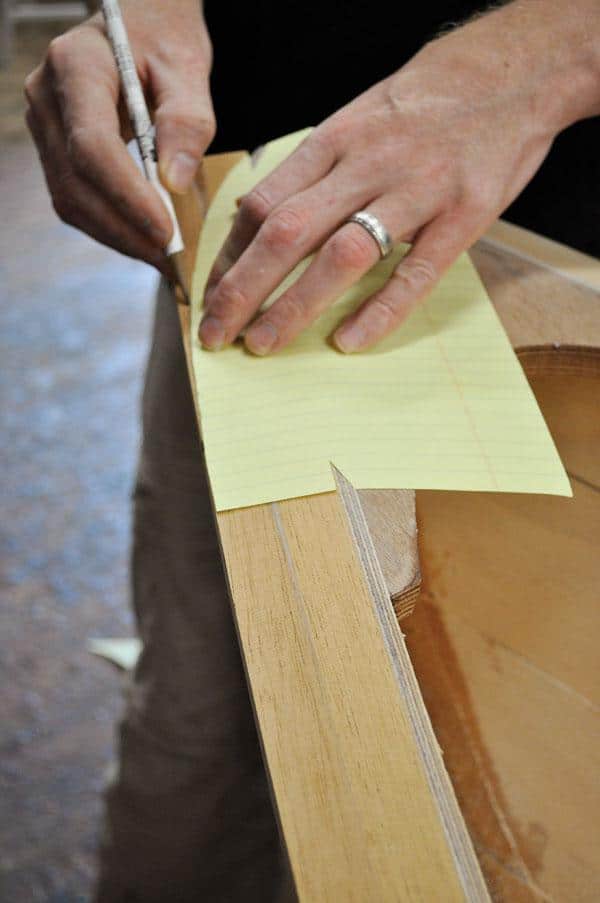
By Thursday, students who were laboring through the Fundamentals of Boatbuilding or working on a 5 x 10 skiff in Stitch and Glue Construction were wandering in to gaze wistfully, and a little bit lustfully too, at our boats taking shape. We trimmed the interior fiberglass, sanded the hulls, shaped the bows and then applied the exterior fiberglass to the bottom and lower side panels and installed the skegs. Only one student was building his dory with the optional sail rig, so we all watched as Harris assembled a mast step and installed a daggerboard trunk.
On our last full day, Friday, we had really picked up momentum. The days seemed to be flying by, and the progress was starting to make me giddy. I was ready to chuck it all for a career as a boatbuilder — leave it to me to find the only career on the planet that’s possibly less lucrative than boating journalism! But what did I care? I was working with my hands and beauty was emerging. I was made dizzy by the seductive scent of cypress and buoyed up by the thought of the school’s traditional Friday night lobster bake. I was ready to move to Maine and make a go of this whole wooden boat thing.|
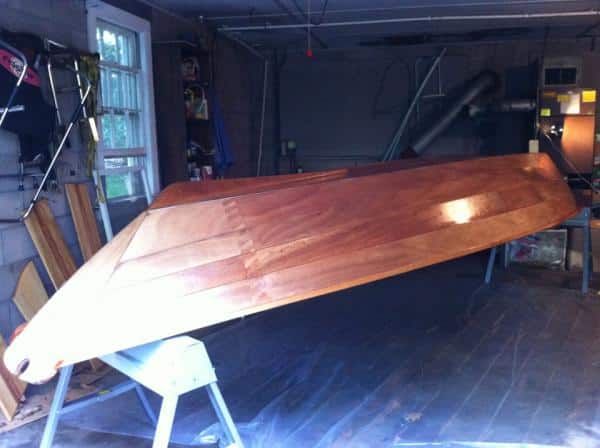
But Saturday morning hit me like a bucket of cold water. Most of the classes end on Friday, so it was sad to come to the quiet, empty barn, as a cold, damp mist moved back in, and remove the clamps that had secured the rails to the boat. Yes, the boat. There was no doubt about it now: We had built a strong, elegant 17½-foot wooden dory in 5½ days. Harris gathered us around to walk us through the roughly 40 hours of finishing we still had ahead of us at home (more epoxy, lots of sanding, varnishing and painting) but still, I knew it was over. My week as a boatbuilder had come to an end. As we loaded the dories aboard each other’s roof racks, exchanged e-mail addresses with our classmates and promised photos of our finished craft, Karyn and I vowed: We are coming back next year to build another boat. We are going to give in and be just like those crazy people who go to Disneyland, year after year.
WoodenBoat School, 207-359-4651; www.thewoodenboatschool.com


